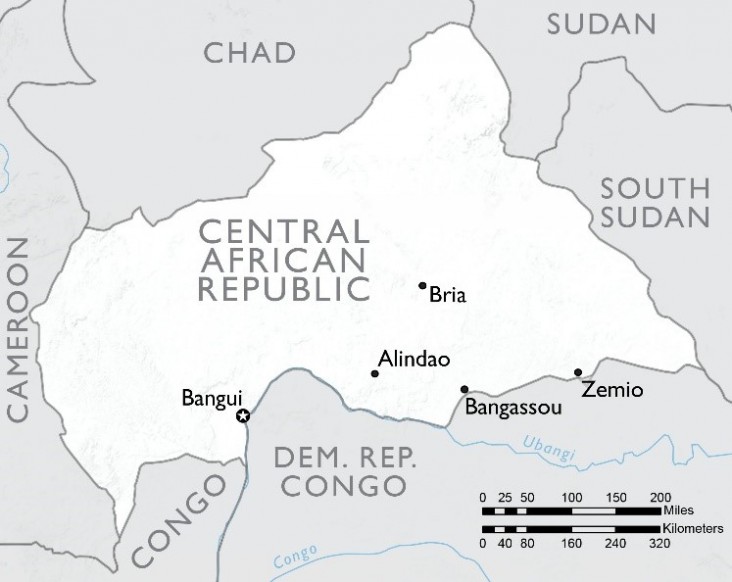- What We Do
- Agriculture and Food Security
- Democracy, Human Rights and Governance
- Economic Growth and Trade
- Education
- Ending Extreme Poverty
- Environment and Global Climate Change
- Gender Equality and Women's Empowerment
- Global Health
- Water and Sanitation
- Working in Crises and Conflict
- U.S. Global Development Lab

August 10, 2017
Food Security Situation
-
Since 2012, conflict driven by political and religious tensions has disrupted livelihoods and food security in the Central African Republic (CAR), a poor, rural nation reliant on subsistence agriculture. As of June 2017, at least 2.2 million people in CAR--approximately half of the country's population--are in urgent need of emergency assistance, the UN Office for the Coordination of Humanitarian Affairs (OCHA) reports.
-
As of June 2017, there were 534,000 internally displaced persons (IDPs) in CAR, including more than 100,000 people displaced in the past six months alone, bringing displacement to its highest level in three years, according to OCHA. In addition, more than 481,000 Central Africans were refugees in neighboring countries as of June 2017. Overall, nearly a quarter of CAR's total population is displaced.
-
The USAID-funded Famine Early Warning Systems Network (FEWS NET) projects that vulnerable populations--including poor, displaced, returnee, and host communities--in Ouham, Ouham Pende, Nana Gribizi, Vakaga, and Ouaka prefectures are likely to endure Crisis (IPC Phase 3) levels of acute food insecurity until January 2018*. FEWS NET also reports that ongoing population displacement and field abandonment may lead to below-average agricultural production in the nation's main harvesting seasons from July 2017 through January 2018 despite normal rains between April and June; this situation may further exacerbate food needs throughout the country.
Food Assistance Programs
-
With support from USAID’s Office of Food for Peace (FFP), the UN World Food Program (WFP) reaches food-insecure people affected by conflict and displacement, including refugees (in the Republic of Congo, the Democratic Republic of Congo, and Cameroon), IDPs, returnees, and host communities. FFP enables WFP to provide U.S. in-kind food assistance and locally and regionally procured food to highly vulnerable people through general food distributions, supplementary feeding activities, emergency school feeding, and food-for-assets activities. FFP also supports WFP for the distribution of cash transfers and food vouchers, as appropriate, to Central African refugees in the Democratic Republic of Congo. To date in Fiscal Year 2017, FFP has supported WFP's reponse to the CAR crisis with approximately $40 million.
-
FFP also partners with the UN Children's Fund (UNICEF) to provide ready-to-use therapeutic foods to treat close to 19,000 children with severe acute malnutrition.
Food for Peace Contributions
Total Contributions:
| U.S. Dollars | Metric Tons | |
|---|---|---|
| Fiscal Year 2017 | $40.0 million | 23,031 MT |
| Fiscal Year 2016 | $50.9 million | 23,776 MT |
| Fiscal Year 2015 | $46.6 million | 21,394 MT |
*The Integrated Food Security Phase Classification (IPC) is a standardized tool that aims to classify the severity and magnitude of food insecurity. The IPC scale, which is comparable across countries, ranges from Minimal—IPC I—to Famine—IPC 5.







Comment
Make a general inquiry or suggest an improvement.